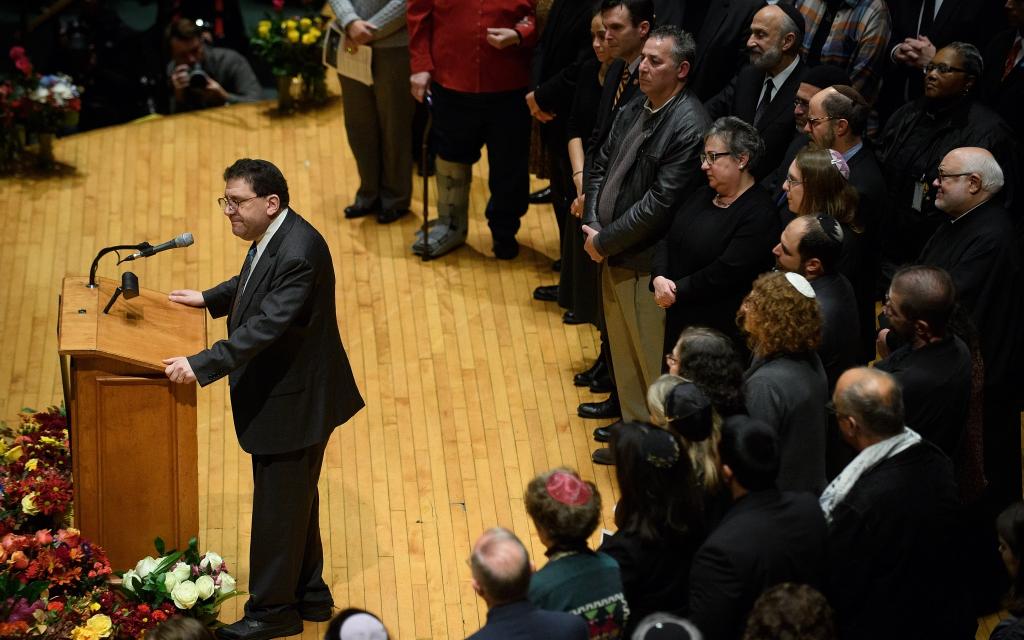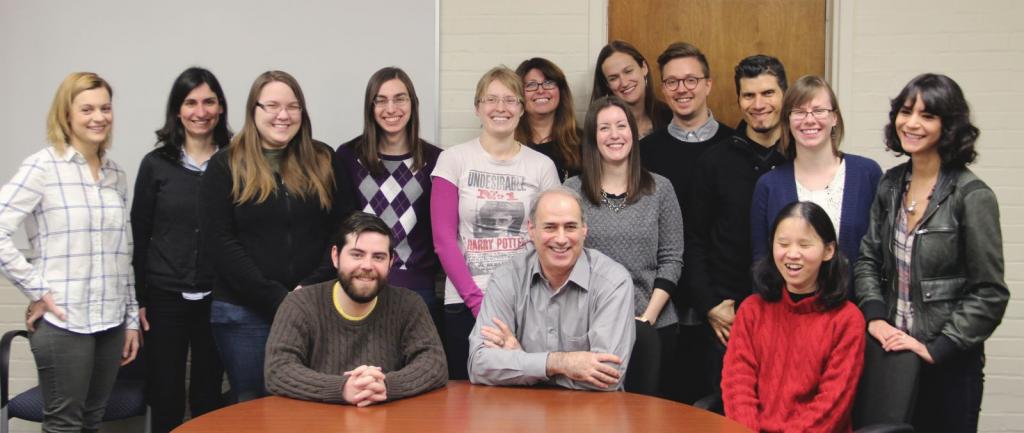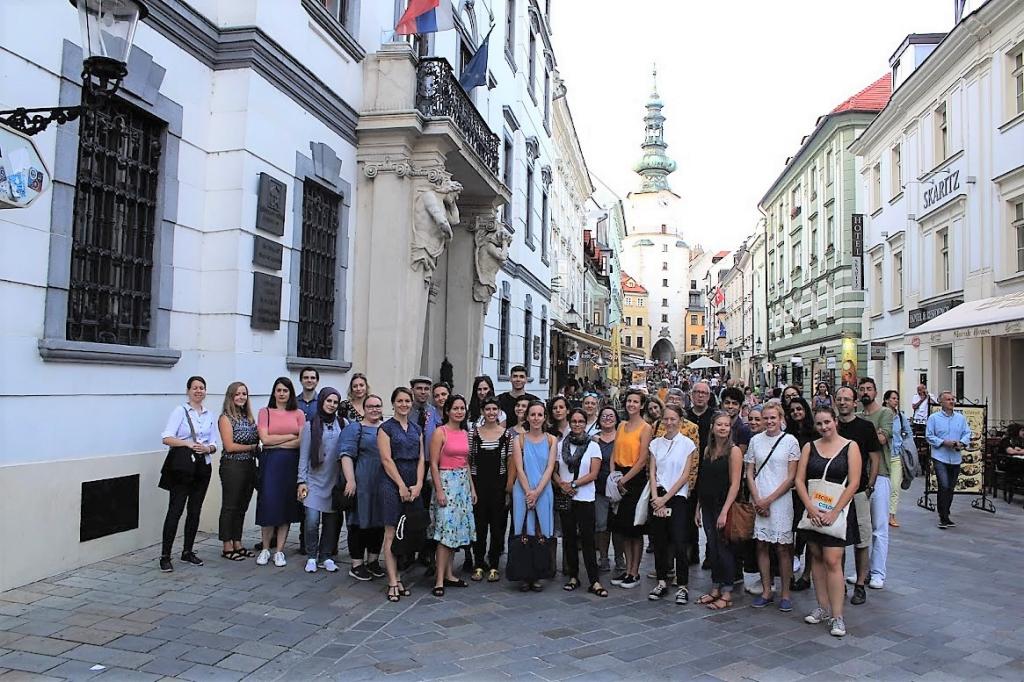From this article you will learn about the concepts of the psychology of intergroup relations. This is a very important and extensive topic. The psychology of intergroup relations studies the interaction between people in different social groups. Interactions between the teams themselves are also being studied. This has long been the subject of research.
Social psychology of intergroup relationships briefly
This issue was highlighted in the middle of the last century. In 1966, Muzafer Sheriff proposed a universally accepted definition of the psychology of intergroup relations. Whenever persons belonging to one collective interact collectively or individually with another group of people or its members in terms of identifying their company, we have a case of inter-collective behavior.
The study of the psychology of intergroup relations includes the study of many phenomena associated with collective processes, including social identity, prejudice, collective dynamics and conformity. Research in this area has been carried out by many famous figures and continues to provide an empirical understanding of contemporary social issues such as inequality and discrimination.
Kinds
The topic of the types of these communications is extremely extensive. Often the types of intergroup relations include:
- cooperation (cooperation);
- social conflict;
- peaceful coexistence;
- competition
- group feud.
Story
The psychological study of collective relationships and behavior began at the end of the 19th century. One of the earliest scientific publications is Collective Consciousness. It was written in 1895 by the French doctor and scientist Gustave Le Bon. This fundamental idea says that when individuals form a collective, they behave differently than individually. Le Bon theorized that when individuals form a crowd, a new psychological construct arises, called the "racial [collective] unconscious."
Le Bon put forward three phenomena explaining crowd behavior:
- immersion (or anonymity) when people lose their sense of responsibility by joining the crowd;
- infection, that is, the tendency of individuals to follow the behavior of the crowd and suggestion.
Subsequent generations of studies of intergroup relations and social influence were built on the basis of these fundamental ideas and studied them using empirical data. So they do today.
The study of intergroup relations in social psychology
The empirical study of this phenomenon has grown significantly in the years after World War II. The Holocaust and the widespread use of propaganda have prompted many sociologists to study intergroup conflict. Sociologists were interested in understanding the behavior of the German population under Nazi rule, in particular, how propaganda influenced their attitude and how many people could obey orders or support the massacres of Jews and other minorities in the Holocaust.
Several prominent social psychologists were oppressed by the actions of the Nazis because of their Jewish faith, including Kurt Levine, Fritz Haider and Solomon Asch. Muzafer Sheriff was briefly detained by the Turkish government in 1944 for pro-communist and anti-fascist beliefs. These scholars will learn from experience and continue to make a major theoretical contribution to the study of intergroup relations.
Cognitive revolution
A revolution in psychology in the 1950s and 60s led scientists to study how cognitive biases and heuristics affect beliefs and behavior. The resulting emphasis on cognitive processes represented a significant departure from the basic behaviorist philosophy that shaped most of the psychological projects in the first half of the 20th century. During and after the cognitive revolution, researchers at intergroup relations began to study distortion in behavior and thinking, heuristics and stereotypes, their influence on belief and behavior.
The research of Solomon Ashe in the 1950s was one of the first experiments in which it was studied how the cognitive process (the need to comply with the behavior of the team) can reject individual preferences and directly influence behavior. Leon Festinger also focused on cognitive processes in developing a theory of cognitive dissonance, which Elliot Aronson and other scientists will subsequently use to describe how people feel sympathy for the community in which they were initiated, but which they cannot agree with. This is written in Gulevich’s book “Psychology of Intergroup Relations”.
Discrimination and prejudice
The civil rights movement of the 1950s and 60s led sociologists to study prejudice, discrimination, and collective action in America. In 1952, the NAACP called for a study in the social sciences to further examine these issues in the light of the Brown v. Board of Education trial.
Gordon Allport's 1954 book, The Nature of Prejudice, provided the first theoretical basis for understanding and counteracting prejudice and reinforced prejudice as the central center of social psychology. In his book, Allport proposed the contact hypothesis, which states that interpersonal contact under the right conditions can be an effective means of reducing prejudice, discrimination and dependence on stereotypes. Subsequent generations of scientists built and applied the Allport hypothesis to other areas of prejudice, including sexism, homophobia.
King Speech
In 1967, Martin Luther King spoke at the annual meeting of the American Psychological Association, urging sociologists to advance the causes of social justice in their research. In his speech, Dr. King urged scientists to study many topics related to the civil rights movement, including barriers to improving the social mobility of African Americans and their participation in political life.
Intergroup interactions, the psychology of which this article is devoted to, are very interesting in the context of interracial relations. Therefore, this issue is worth familiarizing with.
The study of types of intergroup relations in the last decades of the XX century improved earlier theories. For example, Lee Ross applied his research on biases in his work on the Northern Ireland conflict resolution process during The Troubles.
Positive elements
Other scholars have focused on the positive elements of intergroup behavior, including assistance, collaboration, and altruism between communities of individuals. One example of this is a recent field study conducted by Betsy Palak and her colleagues, where they used a radio show filled with positive social norms to enhance reconciliation behavior in an entire village in Rwanda.
Scientists also applied intergroup theories to workplace settings. One such example is Richard Hackman's work in creating and managing workplace teams or teams. In particular, when team members are satisfied with their work, they can grow professionally, considering their work significant.
Technology development
The development of technology has also shaped the study of types of intergroup relations, first with the adoption of computer software. And then using neuroimaging techniques such as MRI, for example. One example of how psychologists use new technology to study intergroup relationships is the Implicit Association Test (IAT), developed by Anthony Greenwald and his colleagues in 1998 as a means of measuring the strength of automatic association between different mental representations of objects. The IAT is commonly used to measure implicit bias forces for various designs, including gender stereotypes in the workplace.

Gordon Allport developed this hypothesis, which states that contact with members of another social stratum in appropriate circumstances can lead to a decrease in prejudice between the majority and minority. The contact hypothesis is based on three psychological processes: the study of the external community through direct contact, the reduction of fear and anxiety when interacting with the external community of individuals, and the increase in the ability to perceive perspective, which leads to a decrease in the negative assessment.
Some researchers criticize the contact hypothesis, in particular its generalizability and the fact that inter-collective contact can lead to an increase, not a decrease, of prejudice.
Realistic Conflict Theory
A realistic conflict theory (RCT or RGCT) is a collective conflict model that describes how prejudice between communities arises from different goals and competition for limited resources. Communities of individuals can compete for specific resources, such as money and land, or for abstract resources, such as political power and social status, resulting in hostile zero-sum beliefs. The RCT was originally proposed by Donald T. Campbell, and then was developed in classical experiments by Muzafer Sheriff. The Sheriff Robber's Cave experiment provided evidence for the RCTs by randomly assigning boys to a summer camp with the same past in different groups.

Then the boys in these teams competed with each other and revealed the hostile beliefs of the external group until the common goal of cooperation was imposed, which required the teams to work together, which led to a decrease in feelings of hostility. The sheriff argued that collective behavior cannot be the result of an analysis of individual behavior and that intergroup conflict, especially one caused by competition for limited resources, creates ethnocentrism.
Theories of Social Identity
In the 1970s and 80s, Henri Tyfel and John Turner proposed two interconnected theories - self-categorization and social identity, which together form a method for understanding the psychological processes that underlie people's understanding of their identity and group membership.
Theory No. 1 (self-categorization) explains the contexts in which the individual perceives the totality of people as a group, and the psychological processes of this perception.
Theory No. 2 describes how individual identity is formed by membership in a social stratum. She also predicts differences in intergroup behavior based on perceived status differences between social communities.
Effect of differences
Early studies of intergroup relationships and interactions focused on understanding the processes behind collective interactions and dynamics. What did the experts conclude today?
At present, intergroup relations are characterized by the fact that scientists apply and improve these theories in the context of modern social problems - inequality, discrimination based on gender, sexual orientation, race / ethnicity and religion.
Value
Various theories from the psychology of intergroup relations have given many approaches to reducing prejudice. Scientists have focused on developing a theoretical framework for understanding how to effectively reduce collective conflicts and prejudices. For example, a recent intervention developed by Patricia Devine and her colleagues focuses on overcoming cognitive biases and reducing implicit prejudices.
Other studies to reduce prejudice have explored methods for intergroup relationships and interactions, including cooperative learning (such as Elliot Aronson's “Puzzle”).
Meta-analyzes of experiments to reduce the implicit bias showed that many of them give a limited effect that does not persist outside of laboratory conditions. Some experts called for additional field experiments and studies that use longitudinal schemes to test the external validity and durability of existing methods to reduce bias, especially job diversity programs that may not be considered by empirical research.
Other discoveries
Sociologists have studied the phenomena associated with inequality, such as poverty, lack of rights and discrimination, since ancient times. However, experts have only recently begun to develop theories about the psychological consequences of social inequality. Ongoing research has determined the tendency of whites to underestimate blacks because of false beliefs in biological differences.
Most studies on social inequality have mainly focused on specific categories, such as race and gender. More and more scientists are studying the effect of how intersection of identities affects individual and group psychological processes. For example, Judith Haradzewicz and her colleagues viewed race and social class as interconnected constructs in the intervention of utility and value, designed to bridge the gap in racial achievement.
Levin's discoveries
Kurt Levin is considered one of the founding fathers of social psychology and has made a great contribution to psychological research. Levin founded the Center for Group Dynamics at the Massachusetts Institute of Technology in 1945.
Levin was interested in the scientific study of processes that affect people in collectively oriented situations, and the center was originally focused:
- on collective performance;
- communications;
- social perception;
- interpersonal and intergroup relationships;
- community membership;
- leadership and improved functioning.
Levin coined the term “group dynamics” to describe how people and groups behave differently depending on their environment. In terms of interpersonal and intergroup relations, he applied his formula B = ƒ (P, E). The theory underlying this formula emphasizes that context forms behavior in combination with human motives and beliefs, is the cornerstone of socio-psychological research. Levin conducted numerous studies, which became pioneers in the field of organizational psychology, showing that collective decision-making, leadership training and self-management methods can increase employee productivity.
Gordon Allport
American social psychologist Gordon Allport is considered one of the pioneers in the psychological study of forms of intergroup relations. Particularly influential is his book The Nature of Prejudice (1954), which proposed a contact hypothesis that became the basis for research on prejudice and discrimination in the mid-1950s. Allport's contribution to this area is still being developed by psychologists. One example is the general model of community identity developed by Jack Dovidio and Samuel Gertner in the 1990s.
In addition to the theoretical contribution to this area, Allport trained many students who could make their own contribution to the study of intergroup relations. Among these students are Anthony Greenwald, Stanley Milgram and Thomas Pettigrew.
Sheriff's Investigations
Muzafer Sheriff and Carolyn Wood Sheriff conducted several notable experiments on this subject in the mid-20th century, including the Summer Camp experiment. These experiments formed the basis of a realistic theory of conflict, providing a theoretical explanation of the origin of intergroup prejudice, as well as studying methods aimed at reducing the negative relationship between communities. The sheriffs suggested that collective behavior cannot be the result of an analysis of individual behavior. And that the conflict, especially the one caused by competition for limited resources, creates ethnocentrism. Muzafer Sheriff's research on the psychology of collective conflict was based on his experience of observing and studying discrimination and social pressure in the United States and Turkey.
Carolyn Wood Sheriff, together with Muzafer Sheriff and Karl Hovland, developed a theory of social judgment that explains how people perceive and evaluate new ideas, comparing them with current attitudes. The theory outlined how people can persuade and how this can affect individual and collective attitudes.
Solomon Ash
Solomon Ashe's work in the 1950s also helped in exploring levels of intergroup relationships. , , , . , , , . , , , , .
, 1970- 80- . , , . , (, ), , , , . .
, , , - , , , , , . 1984 (SCICN), , , . SCICN , .
Susan Fiske, along with her colleagues Amy Cuddy, Peter Glick and June Xu, developed a model for stereotyping that states that stereotypes and intergroup impressions are formed in two dimensions: warmth and competence. The model of the content of the stereotype is based on the theory of evolutionary psychology. Individuals tend to first assess whether people are a threat (warmth) and then predict how people will act based on an initial assessment (competency). It follows that social strata that compete for real or perceived resources, such as money or political power, are considered low in warmth, while teams with a high status (for example, in terms of finance or education) have a high competency rating . Fiske also participated in the development of a widely used list of ambivalent, hostile, and benevolent sexism.
Claude Steele and his colleagues Steve Spencer and Joshua Aronson are known for studying the threat of a stereotype - situational pressure is felt when they risk confirming a negative stereotype about their community. The threat mechanism is based on three factors: stressful arousal, performance monitoring, and cognitive efforts to reduce negative thoughts and feelings.
There is evidence that the threat of stereotype plays a role in reducing professional performance among people in negatively stereotyped groups, although other studies have questioned this. Steele and his colleagues studied several forms of interventions aimed at alleviating the threat of stereotypes, including methods of self-assertion and providing psychologically “wise” critical feedback.

Anthony Greenwald and colleagues Debbie McGee and Jordan Schwartz developed the Implicit Association Test or IAT. It is used to test the strength of implicit (automatic) associations of an individual between mental representations and is commonly used in intergroup studies to test for bias. Recently, the validity of the IAT as a measure of implicit bias has been called into question. Greenwald, who was a student of Gordon Allport, also studied favoritism in the team, as it is associated with discrimination and a hidden social bias on various topics, including the impact on admission to medical school and the formation of stereotypes among young children. This creates problems of intergroup relations.
Jim Sidanius and Felicia Pratto developed the theory of social dominance, which argues that most groups are organized hierarchically in developed societies. According to theory, they are based on age: older people have more power, like men. These are arbitrarily established hierarchies that are culturally defined and may include race / ethnicity, religion, and nationality. The theory also predicts patterns of intergroup conflict relationships based on strong hegemonic collectives that discriminate and oppress low-power communities.
Sidanius developed a social domination orientation scale to measure the desire of members of one collective to dominate and transcend external communities.
Methods for diagnosing interpersonal and intergroup relationships have also been studied for a long time. Now these studies are very advanced. This is readily written in the book "Psychology of Intergroup Relations" by V. S. Ageev.
Jennifer Richeson studies racial identity, social inequality, and interracial relationships with an emphasis on understanding the psychological processes behind reactions to diversity.
In a paper on social inequality, Richeson and her colleagues Michael Kraus and Julian Rucker found that Americans misjudged the degree to which economic equality was achieved both among “whites” and among blacks with high and low incomes, overestimating economic equality by basis of race. It is written in any textbook of the psychology of intergroup relations and interactions.